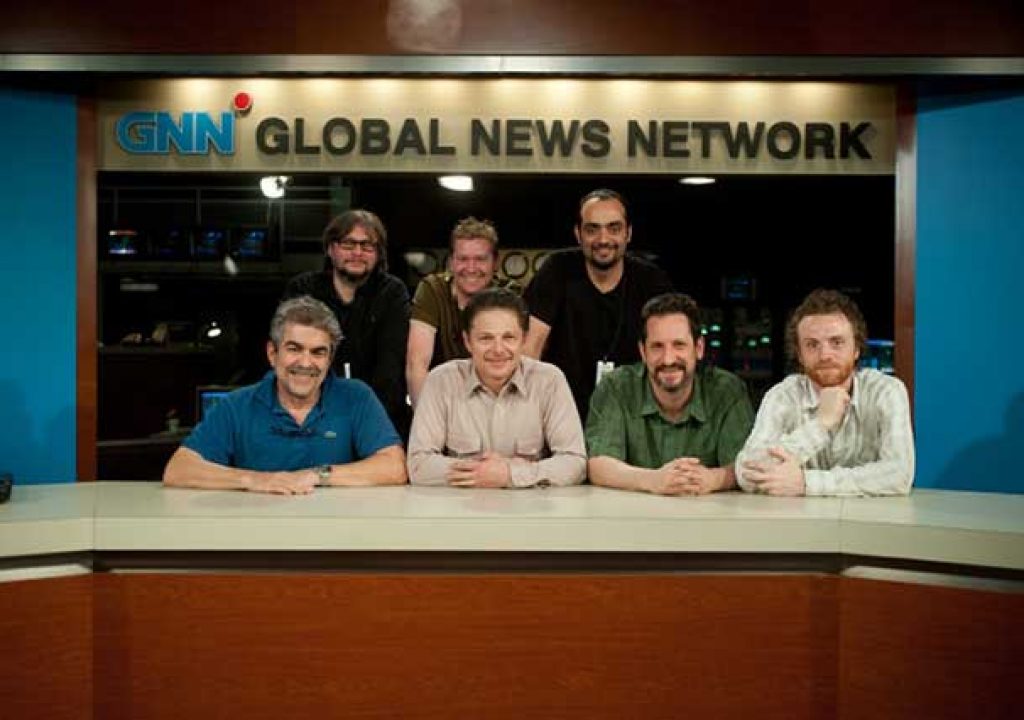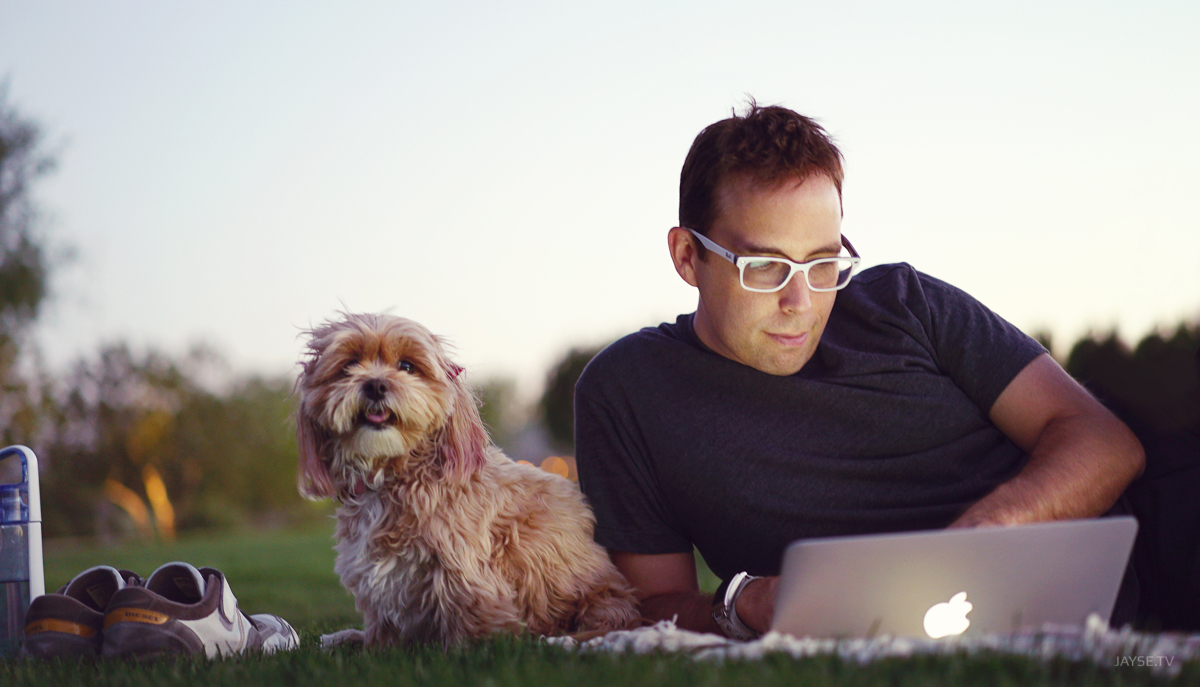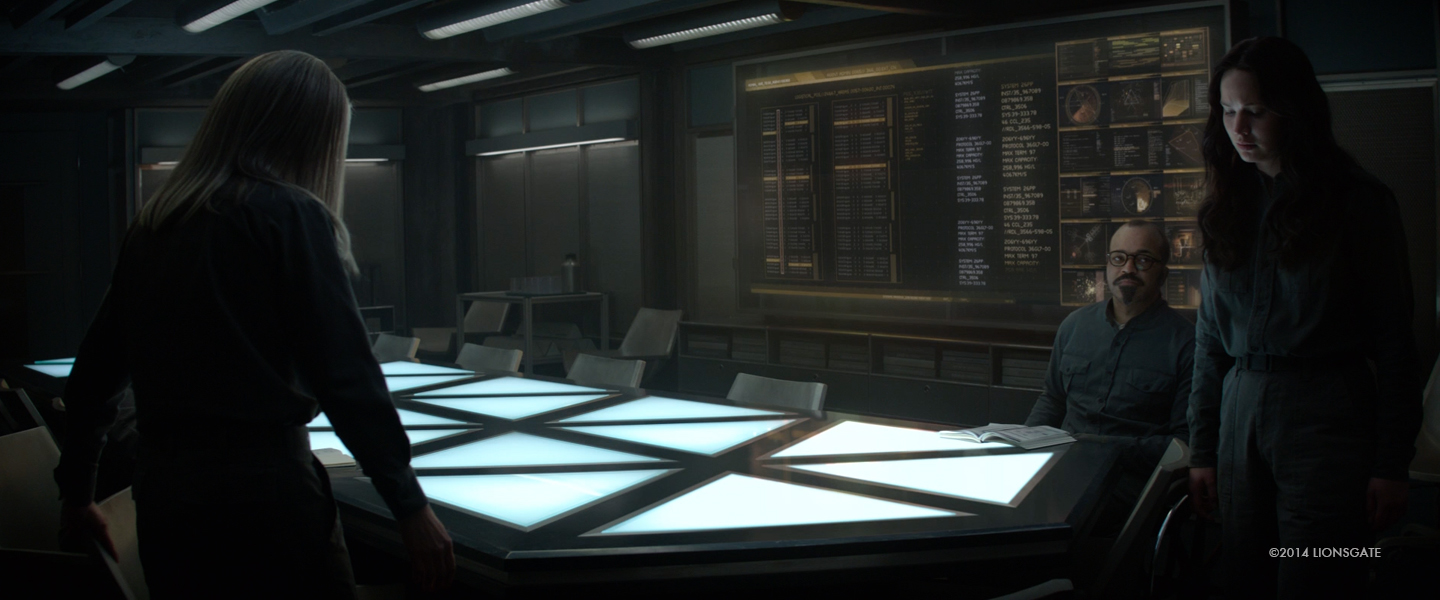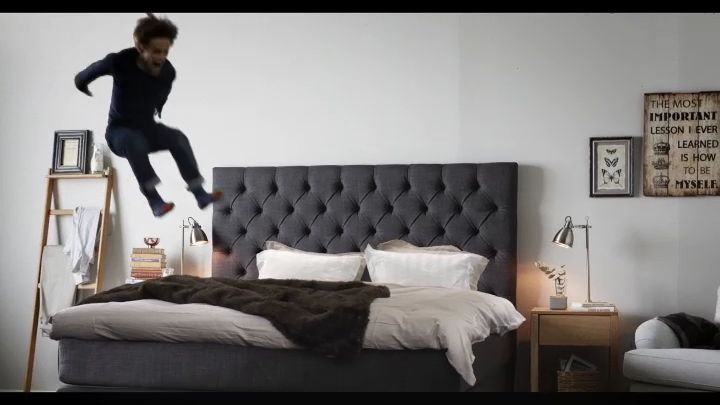To make the set of GNN, the 24-hour news channel featured in Anchorman 2: The Legend Continues as realistic as possible required one essential element: content. It was the job of the video playback and graphics team to fill the dozens of screens throughout the fictional studio with realistic, period-specific news.
Rather than filling the screens in post production and using archived news reports, the team produced nearly all original content and fed it to the screens in real time. News reports were shot and composited together with stock footage using an Adobe Creative Cloud video workflow and plugins from FxFactory, which offers a broad range of VFX tools for editors and compositors.
Playback Supervisor, Todd Marks, worked closely with his hand-picked team, designers Perry Freeze and Jeb Johenning to create the functioning 1980s GNN studio and news-office that helps set the stage for the blockbuster comedy. Todd and Jeb have worked together on many projects over the last 12 years. Perry was added to the team when they worked on the film The Internship in 2012.
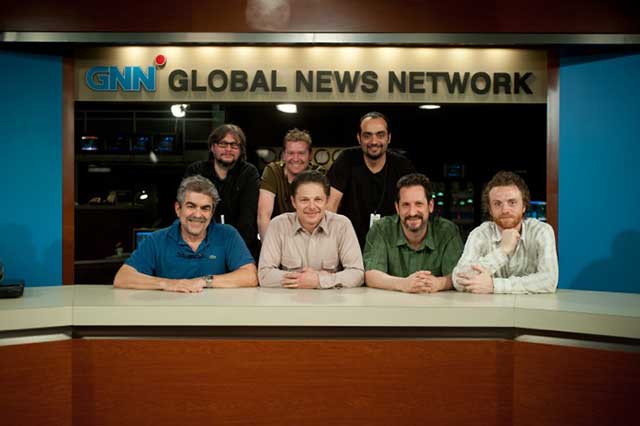
Adobe: What were your roles on the Anchorman 2 movie?
Marks: I was the playback supervisor, responsible for overseeing all of the content creation and playback. In this case, my team put together and ran the functioning GNN studios, and we created all of the content, some which was story specific and some was just background imagery to add to the reality of the time period and the set. We call it “bg” (background) footage and we created a lot of it.
Freeze: I worked as a designer on the film and also helped coordinate the data asset management, which involved keeping track of all of the moving pieces and approvals. On this movie we had a fairly short development cycle. We had to get up and running with a graphics package for the studio, and within the studio we wanted to have up to 10 channels on air featuring news from around the world.
Johenning: I was also a designer, working with Perry on the content. When we initially looked at the breadth of content it was enormous. We had in excess of 100 different videos with one or more ways that we needed to create them, without actually knowing how they would be used.
Adobe: How does it all start?
Marks: We get a script and have to breakdown what’s written, which involves meetings with the production designer, set decorator, director, and even the props and construction people. We make recommendations and try to push beyond what most people think can be done. With the story specific content, we needed to help tell the story in a short amount of time in a visually accurate, period-specific manner. Each film has different needs. For this movie, we needed to recreate a news studio look (we referenced CNN’s style during its launch in 1980). GNN starts with a simple graphics package at launch, as they are on the air longer, we had the look mature by increasing the complexity of the font and graphics package.
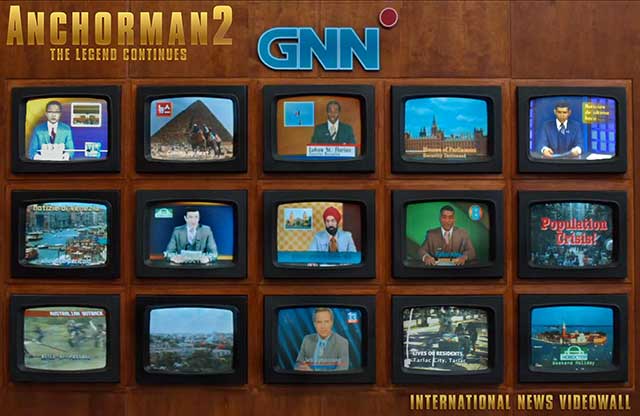
Adobe: How did you go about creating the content?
Freeze: We couldn’t possibly get clearance from actual archived material or we would have had to stick to a very narrow, stock footage type of content. So very early on we decided to make all of the content.
Johenning: In the GNN studio’s office, there is a big wall with 15 different monitors that show everything happening around the world. Every piece of footage had to look local to its environment. We hired actors to be our period reporters and we then filmed “man-on-the-street” interviews. I’m a videographer, so Perry and I worked with our video team and shot most of the unique footage for this project. The wardrobe people put the actors in period costume and we filmed them against a green screen in both interior and exterior locations.
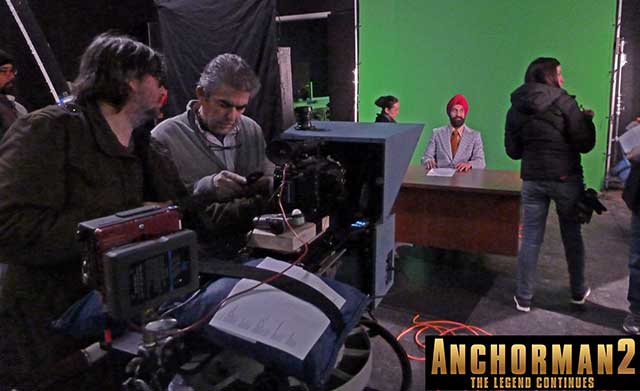
Later, we composited them into different locations, such as in front of the Pyramids in Egypt, the slums in Kenya, or farmland in Iowa. Each one had a different graphical look and feel. We created fake names for the people and used different fonts that would be local to the region. The backgrounds were sourced from stock footage or public domain sources. We also went around Atlanta, Georgia and filmed b-roll elements that we later used as content in our news reports, in addition to the composited green screen shots.
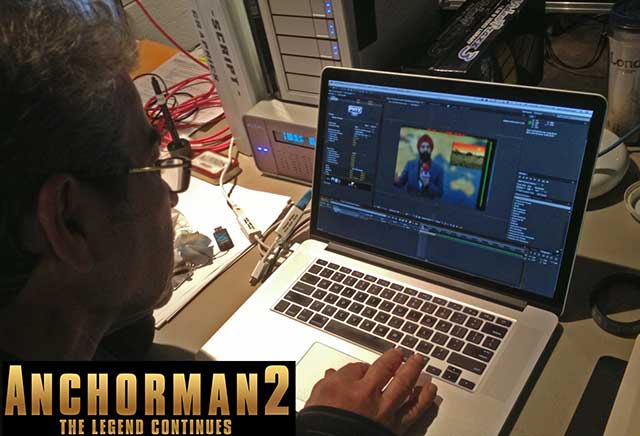
Adobe: Was it easy to integrate the new and old footage?
Johenning: All of the new footage was shot on a Sony F3, so it was beautiful HD quality. The stock footage backgrounds were 10, 15, or even 20 years old, standard-definition video and film, so the look of the two formats was completely different. We had to dumb down the foreground shots to make them look believable with the background stuff. We used an extensive array of Adobe tools, including Premiere Pro, After Effects, and Photoshop, to make everything look authentic.
Marks: The PHYX products from FxFactory were used extensively. We used PHYX KEYER tools, PHYX CLEANER, and PHYX DEFOCUS to create composites, match the looks of the different footage, and add depth to the shots to make them look realistic. Using the PHYX filters with After Effects and Premiere Pro really helped to streamline our workflow.
Johenning: In some cases, we could stay entirely in Premiere Pro, and in other cases we would take footage into After Effects for more specialized compositing. We would ultimately always end up in Premiere Pro, where we would up-res the SD to HD so we could have the cleanest keys, edges, and color correction. The last step was to down-res and use the link to Media Encoder to output a SD piece of footage for playback on an SD monitor.
Adobe: Did you use any other plugins from FxFactory?
Marks: In addition to the PHYX filters, we used FxFactory Bad TV filters to add static hits and signal degradation, just as you would see with a normal satellite feed. Using these plugins adds a sense of reality and gives us the opportunity to do cuts that aren’t perceived by the audience. We used about 10 different FxFactory plugins throughout the film. For news elements, there are specific plugins that add realism to the feel and look.
Adobe: What was the most challenging part of the data asset management?
Freeze: Films don’t shoot chronologically, so it’s important to keep track of what media needs to be on air and how it needs to look at that point in the movie. We used Adobe Bridge to keep track of revisions, star approved artwork, and manage all folders. Bridge is universally tied into Photoshop and Illustrator, making it easy to create contact sheets of all of our work, print them out and post them, or show the top 10 revisions on an iPad to the director while on location, for quick approval.
Marks: The studio had about 150 CRT monitors, and we were able to route from 14 different feeds to each monitor at any time. It requires keeping track of what’s on each monitor in what scene, which involves lots of logistics in additional to the technical aspects. Some of first scenes we did in the studio were in Linda Jackson’s office, where there were three monitors on a far wall. We thought they would just be in the background, but the actors were placed right in front of them. You never know whether something you work on for days or weeks will be shown for just seconds or be featured prominently in a scene. This makes it even more important to keep track of shots so you don’t see the same footage in more than one scene.
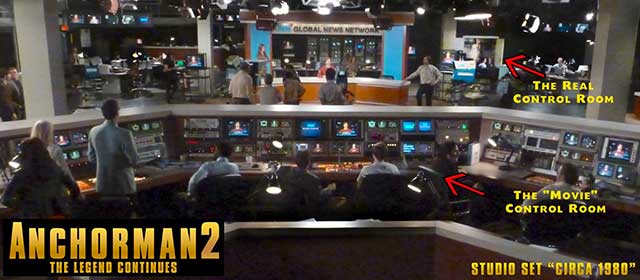
Adobe: Have you started using Adobe Creative Cloud?
Johenning: I was already using Adobe Master Collection CS6, but when Creative Cloud came out I jumped on the bandwagon. An added benefit of Creative Cloud was that it included Adobe Muse. I was a user of Muse for my own business website and having that part of Adobe Creative Cloud was a real bonus! I had switched to Premiere Pro after Apple introduced Final Cut Pro X, and it’s the only editing program I use right now.
Freeze: I’m using Creative Cloud as well. The thing about using Creative Cloud is that when we’re working with teams everyone is on the same current, updated release. We used to deal with people not installing updates, or being on a different version all together, which created problems in our pipeline.
Adobe: What was the process like when you were on set?
Freeze: As prepared as we were, it was very much like a live news broadcast. We were using an AJA IO system to connect After Effects and Premiere Pro directly into our video switcher that was going out to the studio floor. It wasn’t what you would typically do in a TV production situation. We were creating content for the movie on the fly by tying directly into a switcher that was taking live camera feeds of Will Ferrell’s character, and then using After Effects to quickly apply lower thirds and over the shoulder graphics.
Marks: Because we were using standard definition CRTs, to make them look like they came from the right period, the set dressing department created plastic bezels that made the screen sizes even smaller than typical CRTs. This made the normal safety area even smaller, couple that with each old TV monitor’s slightly different scaling, and often I would actually have to be on the studio floor talking the control room through the proper positioning of the graphics on a featured screen.
Freeze: We would run around on the floor with cameras and take pictures of our work on the older TVs, go back to Photoshop or Illustrator and create a matte, and save it as a new title or action safe that could then be applied in After Effects or Premiere Pro when we were working so we knew how something would look when we put it on the period monitors. When you’re on a movie set and you have an entire crew, including all of the actors, waiting for you to finish something or change something it’s a lot of pressure.

Adobe: How is this different than the visual effects we see in other films?
Johenning: None of what we do is done in post production. A lot of visual effects in movies involve
after-the-fact effects. I’m not diminishing the importance of that approach to moviemaking, but in our case rather than filling a monitor with a solid green image and creating, tracking, and coloring the content after a scene is shot, we have to do it as if it’s a live TV show and make it look real and believable.
Adobe: Why was this approach useful in the Anchorman 2 production?
Freeze: We ultimately helped make a better movie because the content was live. The actors could see themselves on the monitors and ad lib, and we made changes to things like titles on the fly.
Marks: We surprised the crew with our capabilities, and it freed the post production people up a lot. There was one scene where we were able to use Photoshop to quickly build a full map of the United States, with temperatures throughout the country, and then overlay satellite imagery using Premiere Pro. Because they were able to use the map in the scene instead of just having a green screen, Steve Carrell was able to see himself on the monitor and play off of what was happening. The director was also able to give him direction based on what he saw evolving. It was some of the most hysterical stuff we shot and it wouldn’t have happened if it was done in post production.
Adobe: Can you give an example of how After Effects was used?
Marks: One of the scenes in the movie shows the characters covering a car chase. Production was quite concerned about the cost of staging the chase, but the stock footage we had wasn’t long enough. Through some creative editing, Perry made it happen.
Freeze: We had chase footage of two cars, one grey convertible with a closed black canvas top on the freeway and one larger grey car primarily going through neighborhoods. We used the Roto Brush in After Effects to track the roof of the larger car and then darken the roof to match the other vehicle. By using tools in Premiere Pro to flip the footage and slow down and speed up shots, we were able to edit together a longer scene, with four different segments for playback.
Adobe: Were there any other benefits of working with Adobe video tools?
Marks: With Adobe tools being so portable we were able to take the same laptop we used on stage back to our hotel room and still have the same powerful workflow. It was especially useful when we were working late on graphics that were needed for the next day of shooting. Doing our job would be nearly impossible without Adobe’s powerful software tools.
Learn more about Adobe Creative Cloud
Download a free trial of Adobe Creative Cloud

Filmtools
Filmmakers go-to destination for pre-production, production & post production equipment!
Shop Now